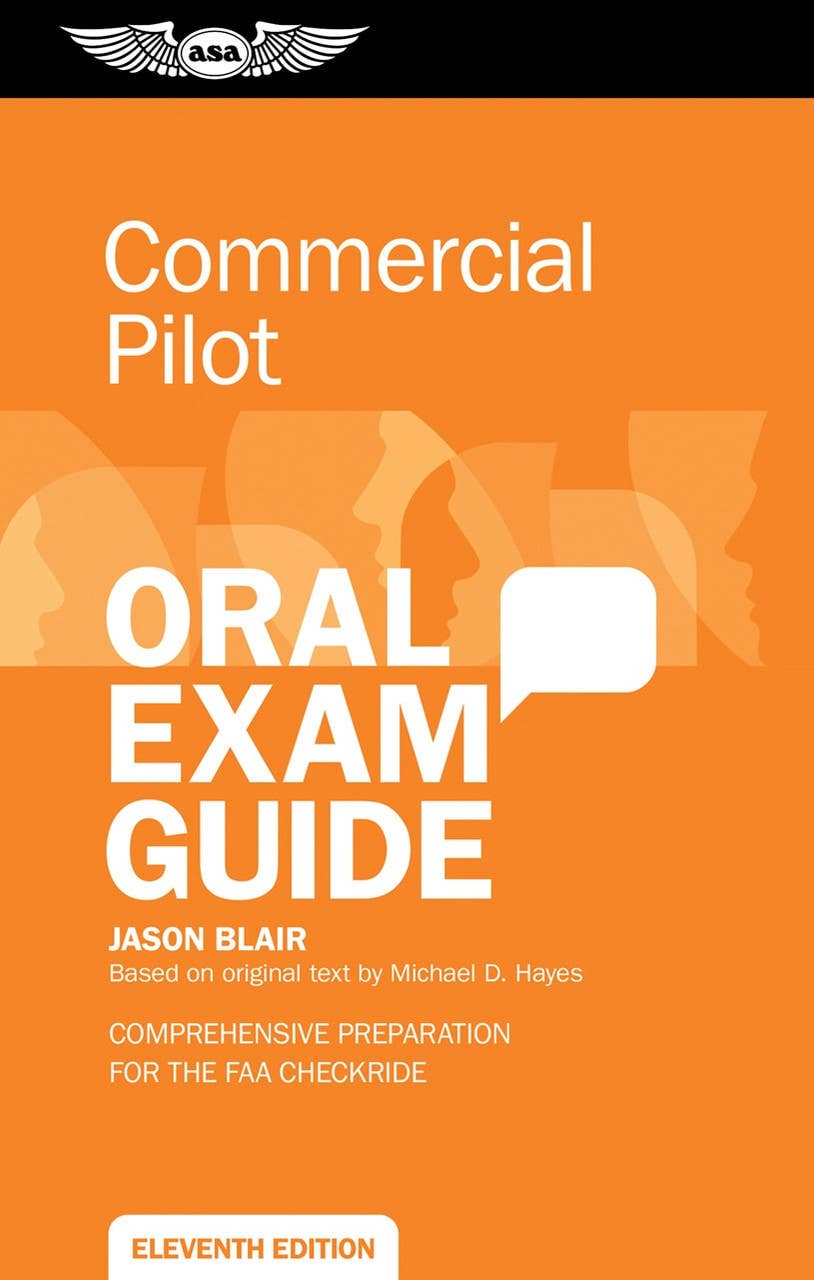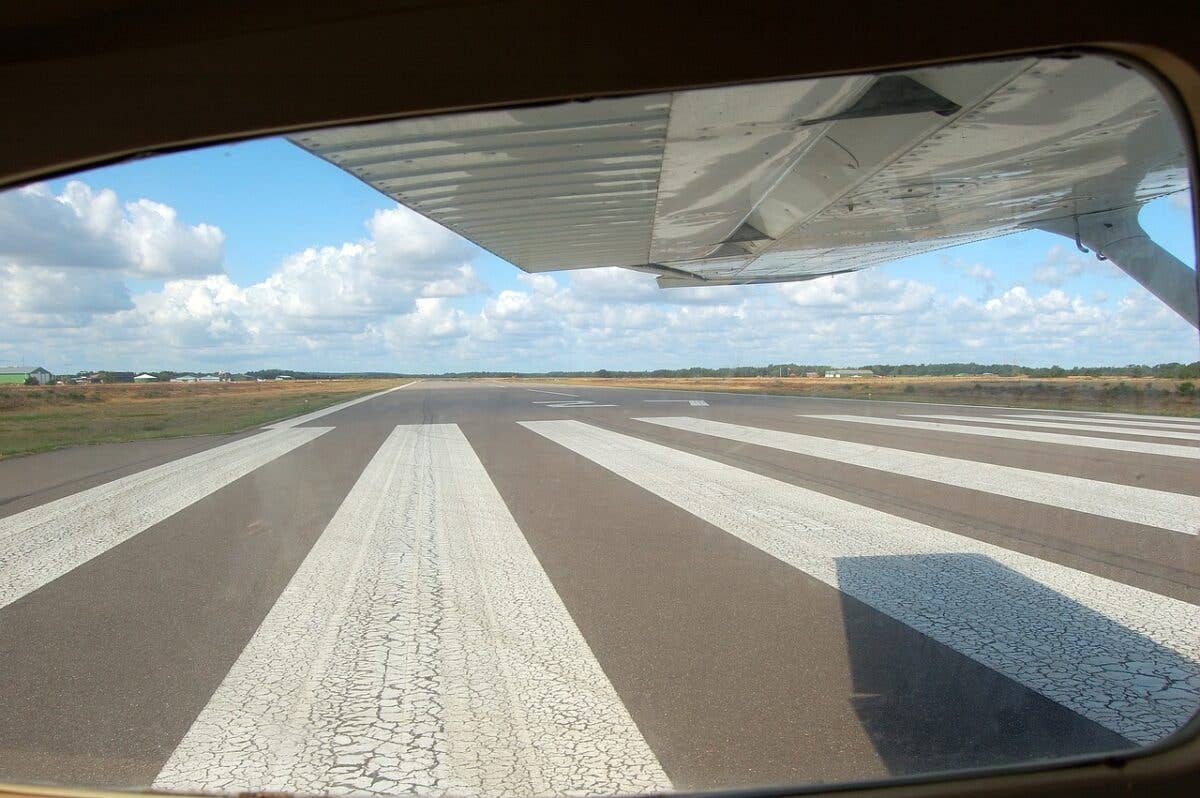Use Study Guides for a Better Check Ride Experience
It’s important to go in well-prepared to thwart the Dunning-Kruger effect.

Although many learners don’t pick up a copy of the Commercial Pilot Oral Exam Guide until just before check ride, you may also find it useful earlier in your training. [Courtesy: ASA]
I spent three hours with a private pilot applicant getting him ready for his check ride. That was an hour longer than we both anticipated, but it was necessary. There was a lot missing from his knowledge base. He told me the fuel gauges of the Cessna 172 were vacuum powered. His nav log was incomplete, and he struggled to identify airspace even when allowed to use the legend panel on the VFR sectional. Yet he told his CFI that he had passed the mock check ride with flying colors.
The CFI didn’t believe the learner for one minute, as we had known each other for years, and he knew I made lots of notes during these evaluations. The debrief is extensive and considerably longer than “passed with flying colors.”
The CFI sent the learner to me, he said, because he was the poster boy for the Dunning-Kruger effect.
The Dunning-Kruger effect is a term for a cognitive bias in which people with limited knowledge or competence in a given intellectual or social domain overestimate their knowledge or competence in that domain—and here is the important part —relative to objective criteria. In this case, the Airman Certification Standards and their score on the FAA Private Pilot Knowledge Test.
This applicant scored an 82 on the knowledge test and scoffed that anything over 70 was overkill.
It became apparent rather quickly that he may have known the information once, but he couldn’t give it back to me when I asked questions about aircraft systems, weather, and airspace—all the areas he had been shown “deficient” on the knowledge test.
This applicant was lucky in that his instructor knew he had soft spots that needed to be eliminated before the check ride. Some instructors don’t see them, and I maintain a subset of the Dunning-Kruger effect is when the recommending instructor overestimates the learner’s abilities.
This happened to an acquaintance of mine who had a private pilot applicant fail during the oral part of the check ride due to inadequate knowledge of aircraft systems. The CFI had been teaching a 10-week private pilot ground school at a local community college and the learner was in the class. The learner passed the class with an “A,” so the CFI thought he knew the material.
Neither the CFI nor the applicant were prepared for the failure. There were other similar failures from the class. A little bit of sleuthing revealed the structure of the program was to teach to the tests. The message was to memorize the answers and pass. This looked good on their transcripts, as it was a two-year program and many of the students went on to four-year institutions, but this lack of knowledge left them woefully unprepared for the cockpit.
How You Study Is Important
Studying for the check ride can be overwhelming, especially when it comes to organizing the materials.
The fine folks at Aviation Supplies & Academics (ASA) have been doing this for decades with their oral exam guides. If the test involves an oral exam, ASA has a study guide for it, be it for flight ratings, aircraft dispatching, aircraft mechanic, or studying for your flight review.
For 30 years many of the ASA oral exam guides were written by recently retired Michael Hayes (respectful pause), who, through his concise and informative prose, helped thousands of pilots earn their certificates. The latest edition of the Commercial Pilot Oral Exam Guide appeared with a new author—none other than Jason Blair, an active flight instructor, FAA designated pilot examiner, and a regular contributor to FLYING.
I have been using these books for years, both for my own study and to prepare my applicants for their tests. Full disclosure: When the newest editions are released, I go through them, cover to cover, just to make sure I am up to speed on what I am teaching. The ASA Commercial Pilot Oral Exam Guide is in its 11th edition, and I’ve been reading it to refresh and recharge my knowledge.
If you have never used one of these study guides, here is the skinny. The books are organized by subject matter: FARs, aircraft systems, weather, etc., making it easier to focus on knowledge areas that the learner is having trouble with. The material is presented in a Q&A format. For example: “What is the difference between a de-ice system and an anti-ice system?” Answer: De-ice is used to eliminate ice that has already formed, while anti-ice is used to prevent the formation of ice.
Scenarios are used for the most in-depth questions.
- READ MORE: Making the Most of a Ground Lesson
Although many learners don’t pick up a copy of the oral exam guide until just before check ride, you may find it useful earlier in your training as it helps to determine the depth of the knowledge required. This is especially good if you have a tendency to study minutia or have not enjoyed the benefit of working with a CFI with strong ground instruction skills.
The FAA reference for where to find the information is also listed. I like this part the best, because when the examiner asks the learner where they found the information, you want them to be able to refer to a published FAA-vetted resource. Never ever, and I mean ever, reply, “My instructor told me.” That’s like comparing a spouse to that person you had a fling with in college. Just don’t do it.

Subscribe to Our Newsletter
Get the latest FLYING stories delivered directly to your inbox






